I was recently in a classroom with a teacher who loved the article here at Noodle Nook about students with Echolalia and has been working with a particular student on that. She, however, is still struggling with authentic response and this student meeting their writing goal.
‘Ideas?’ She asked…
Of Course!
Try AAC and Sentence Stems!
AAC and Sentence Stems
What To Do for Authentic Response
I have long loved the process of creating speech with sentence stems. This seems to be especially effective with student who have Echolalia and may struggle with vocalization, but have something to say (and are struggling with the processing of getting it out).
I had a student who was Echolalic but when prompted with the sentence starter “I” would verbalized a sentence. Somewhere in the processing stream, he just got stuck with where to start. If I would get him started, he would vocalize independently.
This also held true with writing. Without some kind of starting point, he would start at a blank paper or copy words around the room. The authentic response depended on getting a start.
Enter Sentence Stems stage left! What a perfect place to start!
So How DO I Start?
Getting started is easier than you think. Pick out a stem that fits the situation or the vocabulary you are targeting.
Example: Maybe you are working on words related to summer. In the image above you will see icons for CRAB, TENT, DOLPHIN, and SAILBOAT. Using a Sentence Stem of “See that” we can create some sentences that target the related vocabulary.
A student can create a sentence and then rewrite it as part of their authentic writing experience, or verbalize the sentence of unable to write. If neither is an option, try having the student hand over hand guide YOU as YOU point to the new sentence and read it aloud. At the very least a student is able to relate to the materials and participate in the sentence process.
Sentence Stem Possibilities
So, to recap and make a neat looking list, here are some things you can do with AAC and Sentence Stems
- Using one sentence stem, create a sentence and write it down.
- Using one sentence stem, create a sentence and vocalize the sentence.
- Using one sentence stem, create a sentence and hand over hand while it is vocalized.
- Using one sentence stem, create a sentence from several possible icons, all of which make a true sentence.
- Using one sentence stem, create a sentence from several possible icons, only some of which make a true sentence.
- Using one sentence stem, create a sentence from several possible word cards, all of which make a true sentence.
- Using one sentence stem, create a sentence from several possible word cards, only some of which make a true sentence.
- Now try any of the above with more than one sentence stem, all of which make sense with the available word cards/icons.
- Try any of the above with more than one sentence stem, only some of which make sense with the available word cards/icons.
Do you have group work you want to do with this method? Try Predictable Chart Writing!
What is Predictable Chart Writing and How Do I Do It?
Predictable chart writing looks a lot like the AAC and sentence stems method you just read about. You use sentence stems with a pocket chart to do some group writing.
With true predictable chart writing, you follow specific steps. You can read about the steps HERE with a printable guide from the folks at UNC. This is a little different, but the model I used in my classroom. I found that it worked better with my students and in the time I had available. Adjust your delivery as needed to be successful!
Day 1: Generate Ideas. If you are working on a specific topic and sentence stem, you may want to prime your student’s brains by brainstorming first. Example: we are working on going to the beach. My stem will be “I can see the”. The class may start to look at pictures and books to generate ideas on what will can see at the beach.
Day 2: Write Sentences. Students would recall all the things they learned the day before and start to generate their sentences using the sentence stem. I would write the sentences down on the Whiteboard or on sentence strips. Every student contributes a sentence and they all would start, in our example, “I can see the…”
Day 3: Reread the Sentences. Here, students will reread the sentences they have built. Point to each word as you or your students read the sentences aloud. If you are really looking to build on AAC use, choose sentence stems that use core vocabulary and have students “read aloud” by activating the core words on their device or with their Core Board. (Need more on Core? Read This!)
Day 4: Build a Sentence. With their sentences written, cut up the sentence into individual words. Students will use those word cards to build their sentence (which targets sentence semantics and allows students to access the lesson in a tactile way). Students will then reread their sentences once they are built. Working with students with some mad skills? Make this more challenging by having students build each other’s sentences!
Day 5: Make a Book. I love this part… because at the end you have a book make by all the students in your class on the topic of the week. At the end of a school year, you’ll have a library of more than 35 books with sentence stems and content words all focused around the core! Each student gets a piece of paper, they build their sentence and glue it down. Then they will illustrate the sentence and be sure to write their name. Put all the student’s work together and you have yourself a perfect book for silent reading, independent work, or maybe leisure time!
Tips to Remember
When you follow these steps and really emphasize the use of AAC, you will find students are learning how to be effective communicators in an engaging and academic way. Just remember a few rules along the way:
- Model with the student’s device. They will learn from watching you and what you do.
- If there is no device then model the process, the language, the tone and the pacing for a student.
- Assign meaning to words as you come to them, especially when learning now vocabulary.
- Use self-talk to show your students how you think through a process.
- Remember to model for a student, then have them show you how. Let go of the control and let them explore, make mistakes, and learn with meaning.
- Ask expansion questions along the way so, while engaged, you can start to have meaningful conversation and use all the skills you’ve learned to make that dynamic.
Chart Writing, AAC and Sentence Stems
So now that you’ve read how easy this process is… what could go wrong?
Okay. You know as well as I know anything (and everything) can and will go wrong. The most important thing you can do is start. Just start. Things will happen to derail you but keep at it. Your student’s ability to learn their device, get a better handle on the core, start to make authentic utterances, and ultimately communicate depends on you.
No pressure. Teach On!
Want to Learn More? Try Social Scripting!
If you are looking for more ways to increase authentic communication for students with disabilities, you will love sentence stems. BUT if you are looking for ways to improve social communication, then you may want to try social scripting.
Check out my video on YouTube for more!
And, just to let you score some amazing resources for your Autism or Special Education Classroom, check out these two printables (including one freebie)!
Social Scripting Editable Printable Visuals from Noodle Nook (FREE) and Sentence Stems from Noodle Nook
HEY! Get social with us! Follow us on Pinterest, Instagram, Facebook, Twitter, YouTube or iTunes!


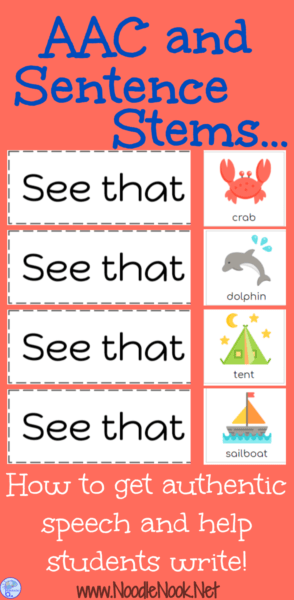
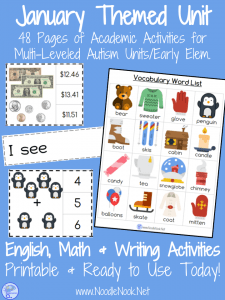
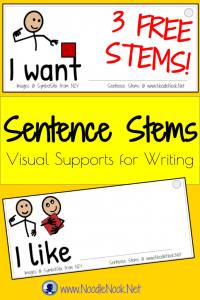
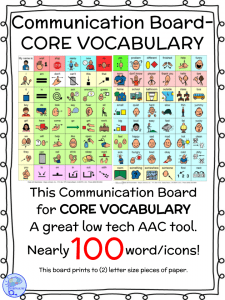
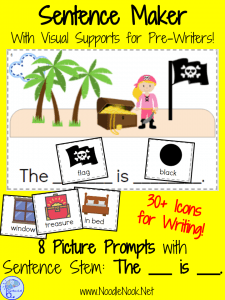
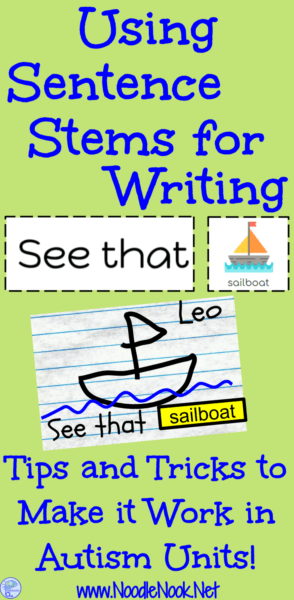

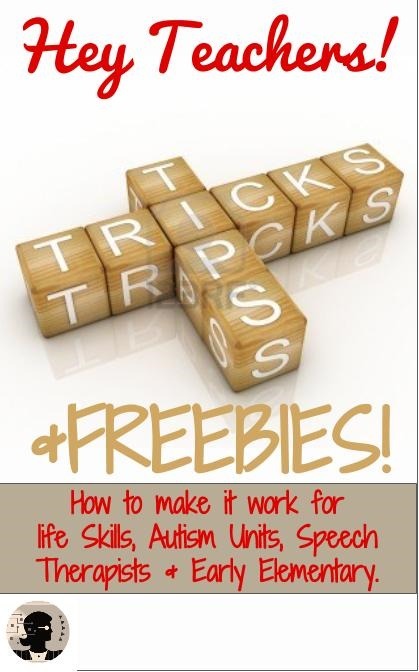
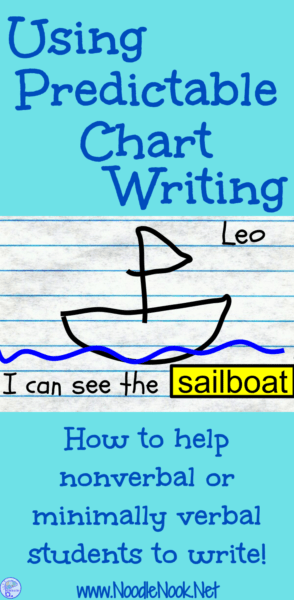

I would love to see some sentence frames aligned to the different scripted curriculums that are being put out. My school uses Wit and Wisdom, and I think it would be so powerful to give students who use AAC boards access to this type of curriculum.
Comments are closed.